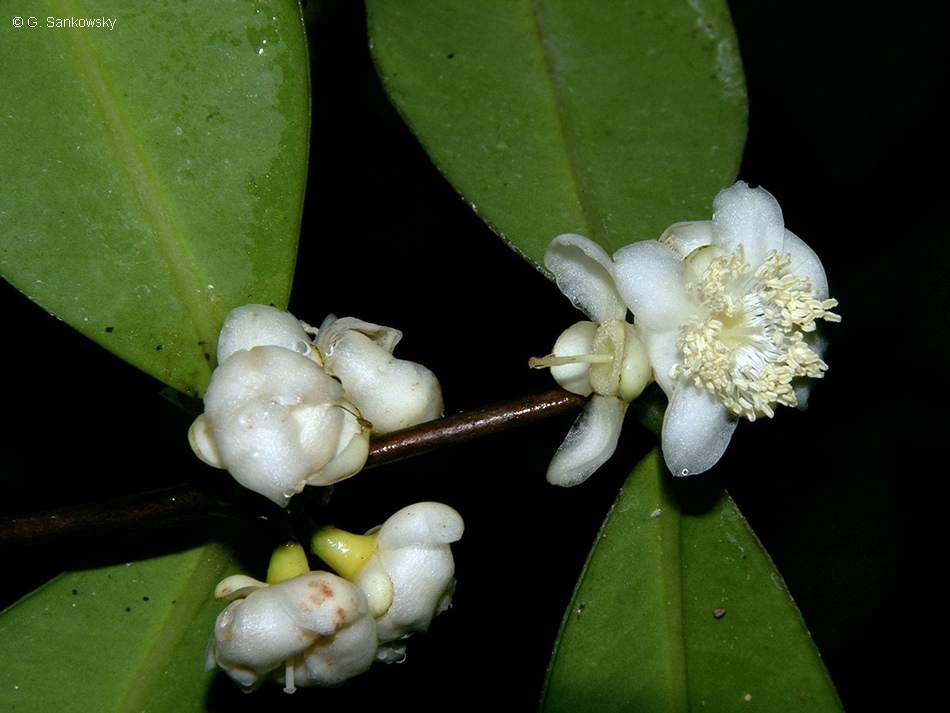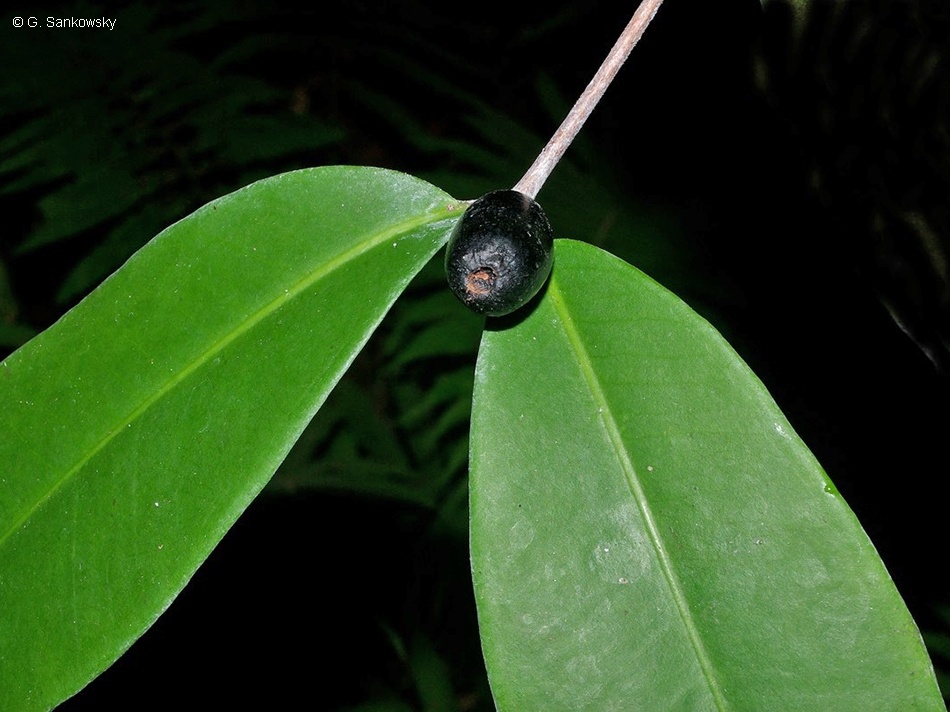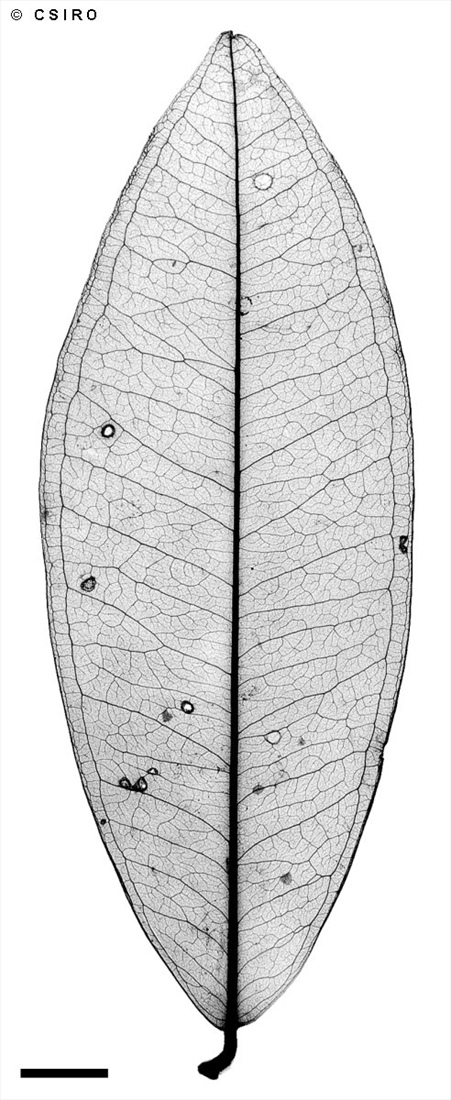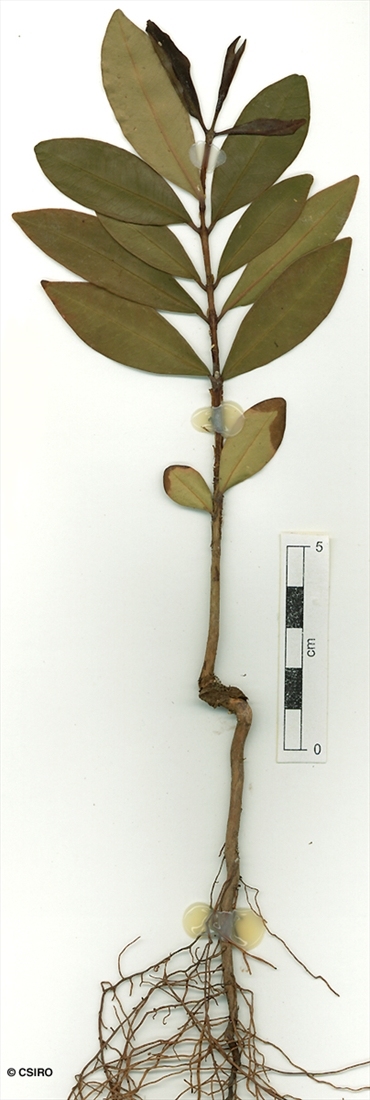Australian Tropical Rainforest Plants - Online edition
Pilidiostigma papuanum (Lauterb.) A.J.Scott






Scott, A.J. (1978) Kew Bulletin 33: 327.
Can grow into a small tree but usually flowers and fruits as a shrub about 1-3 m tall.
Leaf blades about 13 x 4 cm. Two intramarginal veins visible on the leaf blade, the outer vein about 0.5-2 mm from the margin and the inner vein about 2-5 mm from the margin. Lateral veins inconspicuous. Petiole flat or channelled on the upper surface. Oil dots quite numerous, pale brown (?) in colour.
Fruits ovoid, about 25-30 x 15-20 mm, calyx lobes persistent at the apex. Seeds variable in size, about 20-22 x 5-6 mm. Testa +/- smooth but marked by numerous oil glands. Anatomy of the seed difficult to interpret. Cotyledons fused together, radicle +/- at right angles to the long axis of the larger cotyledon and completely envelops the smaller cotyledon.
Cataphylls about 1-3 pairs, produced before the first pair of true leaves. At the tenth leaf stage: leaf blade obovate to elliptic, apex obtuse or almost acute, base cuneate or attenuate, glabrous. Oil dots quite numerous, visible with a lens. Stipules very small and inconspicuous. Seed germination time 51 to 89 days.
Occurs in CYP and NEQ. Altitudinal range from near sea level to 1100 m. Grows as an understory plant in well developed undisturbed lowland, upland and mountain rain forest. Also occurs in New Guinea.





